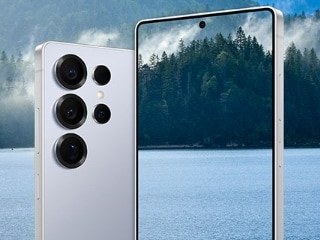- Home
- Science
- Science News
- Aditya L1 Solar Mission Reveals First Significant Findings on Solar Eruptions
Aditya-L1 Solar Mission Reveals First Significant Findings on Solar Eruptions
Aditya-L1's VELC has observed its first CME, offering vital data for solar studies.

Photo Credit: ISRO
The Aditya-L1 spacecraft before its September 2023 launch, flanked by the PSLV C57 payload fairing.
Indian scientists have achieved an important milestone in solar research, reporting the first major findings from the Visible Emission Line Coronagraph (VELC) aboard India's Aditya-L1 mission. The solar mission, launched by the Indian Space Research Organisation (ISRO) in September 2023, is India's first dedicated solar observation project positioned at the Lagrange Point 1 (L1). This breakthrough is a key step toward understanding the Sun's magnetic activities and their impact on space weather.
Details of the First Observed Solar Event
Scientists from the Indian Institute of Astrophysics (IIA) in Bengaluru have reported that they were able to pinpoint the exact onset of a Coronal Mass Ejection (CME) on July 16 by using the VELC instrument. This marks a significant accomplishment for the mission. Prof. R Ramesh, a senior professor at IIA and the principal investigator for the VELC payload, emphasised that this is the first science result for ISRO's solar mission. As per multiple reports, the team closely observed the CME as it formed near the solar surface and gained insights into the Sun's corona, which may aid in modelling solar eruptions.
A New Approach to Solar Observations
The VELC, uniquely designed and developed by IIA in collaboration with ISRO, is currently the only active coronagraph in space capable of observing the corona so close to the Sun's surface. Unlike most instruments that capture CMEs after they move farther away from the Sun, VELC allows scientists to observe these eruptions right from their initial stages. Dr V Muthupriyal, an astrophysicist with IIA, stated that spectroscopic observations provided by VELC offer new opportunities to analyse CME dynamics in unprecedented detail.
Impact of Solar Cycle and Future Research Prospects
With the Sun approaching a solar maximum in its 11-year activity cycle, the frequency of CMEs is expected to increase significantly. Continuous monitoring of such solar events is crucial to understand space weather, which can affect satellite communications and other space-dependent technologies. According to Prof. Ramesh, the data collected will be vital for developing future predictive models, as the current phase of Solar Cycle 25 intensifies. Aditya-L1 is poised to gather invaluable data that will support scientists in predicting solar activities and mitigating their impact on space weather.
Get your daily dose of tech news, reviews, and insights, in under 80 characters on Gadgets 360 Turbo. Connect with fellow tech lovers on our Forum. Follow us on X, Facebook, WhatsApp, Threads and Google News for instant updates. Catch all the action on our YouTube channel.
Related Stories
- Samsung Galaxy Unpacked 2025
- ChatGPT
- Redmi Note 14 Pro+
- iPhone 16
- Apple Vision Pro
- Oneplus 12
- OnePlus Nord CE 3 Lite 5G
- iPhone 13
- Xiaomi 14 Pro
- Oppo Find N3
- Tecno Spark Go (2023)
- Realme V30
- Best Phones Under 25000
- Samsung Galaxy S24 Series
- Cryptocurrency
- iQoo 12
- Samsung Galaxy S24 Ultra
- Giottus
- Samsung Galaxy Z Flip 5
- Apple 'Scary Fast'
- Housefull 5
- GoPro Hero 12 Black Review
- Invincible Season 2
- JioGlass
- HD Ready TV
- Laptop Under 50000
- Smartwatch Under 10000
- Latest Mobile Phones
- Compare Phones
- OnePlus 15R
- Realme Narzo 90x 5G
- Realme Narzo 90 5G
- Vivo S50 Pro Mini
- Vivo S50
- OPPO Reno 15c
- Redmi Note 15 5G
- Redmi Note 15 Pro 5G
- Asus ProArt P16
- MacBook Pro 14-inch (M5, 2025)
- Infinix Xpad Edge
- OnePlus Pad Go 2
- OnePlus Watch Lite
- Just Corseca Skywatch Pro
- Acerpure Nitro Z Series 100-inch QLED TV
- Samsung 43 Inch LED Ultra HD (4K) Smart TV (UA43UE81AFULXL)
- Asus ROG Ally
- Nintendo Switch Lite
- Haier 1.6 Ton 5 Star Inverter Split AC (HSU19G-MZAID5BN-INV)
- Haier 1.6 Ton 5 Star Inverter Split AC (HSU19G-MZAIM5BN-INV)
















